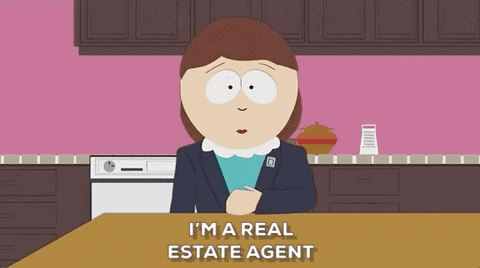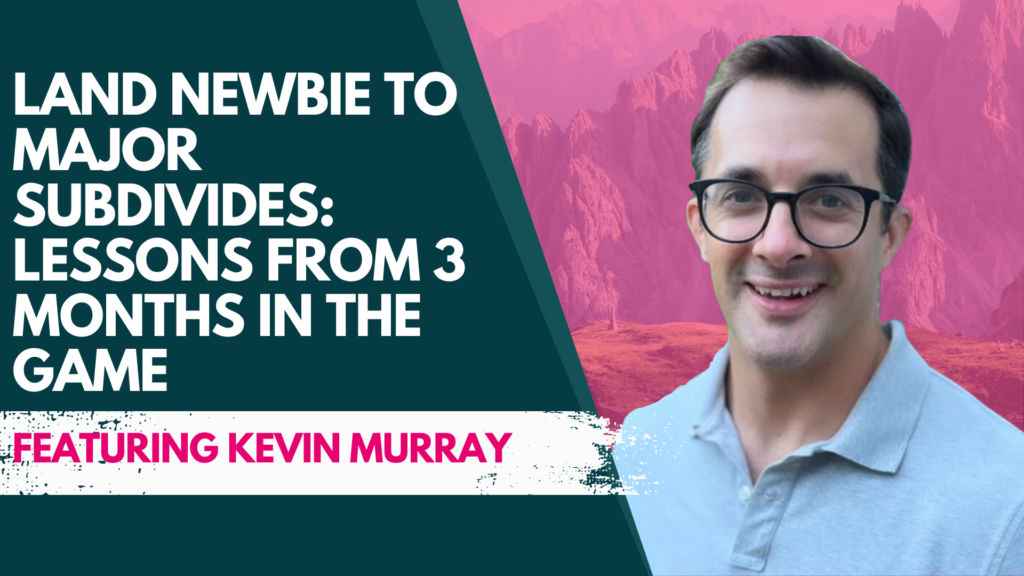
02 Jan 2023
Determining Land Value: The Key to Making a Smart Offer
How long can you survive as a land investor by just ball parking the value of land you’re interested in.
Relying on guesswork might work for now but it no doubt eats away at your margins and as the land investing landscape gets more competitive, can you really afford that?
Getting the market value of land right matters because it’s directly tied to your offer.
Unfortunately, finding the value of empty land isn’t quite as simple as zeroing in on the value of a piece of brick-and-mortar real estate.
Valuing property vs valuing vacant land
To restate the obvious, valuing land and valuing property are two different things.
When valuing property, i.e., homes, apartments, commercial properties, etc., you’re considering the value of any buildings or improvements that are located on the property and the land. Those variables, when taken together, are easier to assess. Often an appraiser or real estate agent can reliably do this and sites like Zillow and Redfin offer easy access to comparable properties.
In contrast, when valuing land, you’re only considering the value of the land itself, without those buildings or improvements. Just raw potential. To that end, 2 of the 3 traditional valuation methods – income and cost evaluation – aren’t all that useful. Assessing the income a brick-and-mortar property can produce or the cost associated with building an equivalent building just doesn’t work.
We’ll touch on the third method in a minute.
What gives a piece of land value anyway?

It might seem that the prospects of approximating market value are gone but relax, hope is not lost!
Land gives a lot of hints about what it’s worth and the better you get at recognizing what creates value, the better your ability to uncover the market value becomes.
Here’s a list of variables to consider when looking into any piece of vacant land:
- Location, location, location
- Road access to the land itself
- Zoning
- Surrounding properties
- Proximity to nearby services
- Access to utilities
- Size, shape and layout
- Type of soil
- Ability to harvest land, timber or minerals
- Likelihood of weather-related issues, i.e., floods, tornados, etc.
- Unique natural features
- Other available inventory (or lack thereof) in the area
- How competitive the market is
- Holding costs
As for the “how” of valuing land, now we can chat about that 3rd method of valuation; sales comps.
The importance of sales comps when valuing land
Before going further, it’s worth noting that finding the market value of land via comps is just one of many different ways to determine valuation.
But it’s one that works pretty well and coupling knowledge with comparable, completed sales is often the secret sauce to finding market value and the ace up your sleeve when making an offer.
But how do you find comps for vacant land? We’ve created a dedicated tool called the Pebble Pricer that lets you quickly find comps from almost any real estate marketplace’s website in seconds – directly from their site and for free.
Check out this quick explainer on how easy it is to install and use Pebble Pricer:
You can also check out Prycd who offer fantastic pricing tools (for a price).
Bonus valuation tip: connect with a real estate agent

This isn’t a must but after finding some land you love, it’s not a bad idea to check in with a local real estate agent and have them poke around to either confirm your price range or get it closer to where it should be.
Question is, how do you find the right agent? Especially if you’re looking for land in an unfamiliar region.
Enter Jaren Barens – expert land investor, RETipster Senior Creative Director and former BiggerPockets contributor – who talked to us about just that. How to find, interact and work with real estate agents for land purchases.
Once you know the value, how do you make an offer?

With an understanding of all the valuation variables and informed confidence in your number (NOT a gut instinct), you can move to the next step:
Making the offer.
Offering the exact valuation for a piece of land is naturally a nonstarter because if you give them the exact value you simply won’t have any margin left to turn a profit. In fact, you lose money when you factor in closing fees.
If, for example, a plot of land is worth $10,000 and you buy it for $10,000, you can’t then go sell it for $15,000 arbitrarily.
That begs the question: what percentage of the market value should you offer?
Answer: it depends.
Yea, that’s sort of unsatisfying but it truly does.
It depends on all the factors we mentioned above plus the profit/ROI you aim to achieve PLUS the seller’s motivation to sell.
If they’re willing to wait, your offer will need to be higher. If they’re desperate for the cash, you have the leverage to make an offer that’s more favorable to your terms.
The same thing goes for in-demand vs not-in-demand markets.
If people are clamoring for land in a certain area, you’ll have to up your offers. If demand is low, again, that’s more leverage for you to lower your offer.
Yet another variable is if you’re targeting an entire county or subdivision, i.e., a large, wide campaign. Running comps may show little variance which means a blanket offer may work well but if you find wild fluctuations between parts of a county or division, a ranged offer would make more sense.
Clearly, there are a ton of ways to price offers but as you’ve probably discovered, pulling comps is the foundation upon which you should base your pricing strategy. That’s because comps, particularly on already-sold land, give you the concrete, on-the-ground and in-the-vicinity numbers you need to start from.
Which type of offer to make and in what range

For beginners, neutral letters or letters of interest are a great way to go. They let you start a conversation and ease into an offer based on the comps you found.
A word of warning though, because you’re not starting with an actual offer, sellers tend to want close to market value or what they paid for the land.
Offers using tools like Prycd – which can give you a spreadsheet of offers at each percentage of value you ask it to for each property – are generally the easiest way to get the ball rolling. From there you can either send a direct blind offer or create a ranged offer.
Check out our breakdown of neutral letters and blind & ranged offers.
As you get further into your land investing journey, your ability to price more accurately and offer more confidently will improve.
Here’s a rough range for what to offer on land in an in-demand market:
- Up to $3,000 – 5% to 15%
- $3,001 to $10,000 – 10% to 25%
- $10,001 to $25,000 – 15% to 30%
- $25,001 to $40,000 – 20% to 35%
- $40,001 to $60,000 – 25% to 40%
- $60,001 to $90,000 – 30% to 45%
- $90,001 and above – 30% to 50%
In a colder market, you can generally cap your upper limit to no more than 30% of market value and for land less than $10,000 you should avoid going over 15%.
A good rule of thumb is to stay away from offering over 50% of market value (exceptions can be made but should be just that, exceptions). You should really only be in that range with a highly valued piece of land, up above $90,000, that’s located in a very in-demand area.
Accurate valuation leads to smarter, better offers
Wherever your offer lands, the only way to ensure it’s close to the mark is through proper research, analysis and investigation.
Basing these sorts of business decisions on your instinct, your gut or how you feel about a piece of land is the quickest route to the poor house.
The more you know, the more you can expand those profit margins and the more you’ll end up making per deal.
See how easy it is to pull comps with Pebble Pricer:
Pricer is our FREE Chrome extension that lets you skip the spreadsheets and run comps straight from sites like Zillow, Redfin, LandWatch and more so you can price with confidence.
Discover our latest podcast episodes

24 Oct 2024
Land newbie to major subdivides: lessons from 3 months in the game
Kevin Murray got into land 3 months before the recording of this episode. In that time – from June to September

10 Oct 2024
A Murder of a Land Deal: A Halloween Horror Story
In this episode, we’re talking to Josiah Ronco about a hair-raising deal that took roughly 17 months to close.

